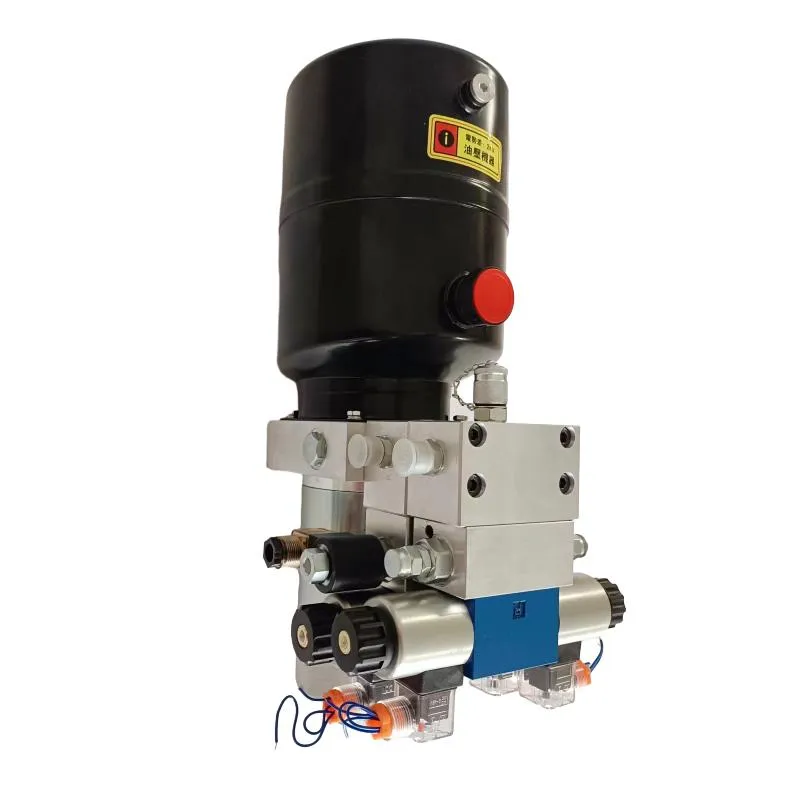Dec . 06, 2024 09:50 Back to list
Hydraulic Lift Cylinder for Forklifts Enhancing Performance and Efficiency in Material Handling
Understanding Forklift Hydraulic Lift Cylinders
In the world of material handling and logistics, forklifts have become indispensable tools. They are designed to lift and move heavy loads with ease, ensuring efficiency in warehouses and construction sites. At the heart of a forklift's lifting mechanism lies the hydraulic lift cylinder, a pivotal component that drives its functionality. This article explores the importance, construction, operation, and maintenance of forklift hydraulic lift cylinders.
What is a Hydraulic Lift Cylinder?
A hydraulic lift cylinder is a device that converts hydraulic energy into linear motion. In the context of forklifts, these cylinders facilitate the lifting and lowering of the forklift's forks. By utilizing hydraulic fluid under pressure, these cylinders can generate a significant amount of force, allowing forklifts to lift loads that are often several times their own weight.
Construction of Hydraulic Lift Cylinders
Typically, a hydraulic lift cylinder consists of several key components
1. Cylinder Barrel This is the outer casing that houses the hydraulic fluid. It is manufactured from high-strength materials to withstand the high pressures involved in operation.
2. Piston The piston sits inside the cylinder and is responsible for converting hydraulic pressure into mechanical force. It creates a seal with the cylinder walls, allowing the hydraulic fluid to exert pressure on it.
3. Rod The rod extends from the piston and connects to the forklift's lifting mechanism. When the piston moves, it pushes the rod out of the cylinder, raising the forks.
4. End Caps These are located at both ends of the cylinder, sealing the hydraulic fluid inside and providing a mounting point for attachment to the forklift.
5. Hydraulic Fluid This is the lifeblood of the hydraulic system. It transfers energy from the hydraulic pump to the cylinder, allowing for smooth operation.
How Hydraulic Lift Cylinders Operate
The operation of a hydraulic lift cylinder is based on Pascal's principle, which states that pressure applied to a confined fluid is transmitted undiminished throughout the fluid. Here's a simplified overview of how it works
forklift hydraulic lift cylinder product

1. Pressurization When the forklift operator activates the hydraulic system, the hydraulic pump sends fluid into the cylinder. The pressure from the fluid pushes the piston upward.
2. Lifting Action As the piston ascends, it pushes the rod out of the cylinder. This movement raises the forklift's forks, lifting the load.
3. Lowering Action To lower the forks, the operator releases the pressure. The hydraulic fluid is gradually allowed to escape back into the reservoir, causing the piston to retract and the forks to lower.
Maintenance of Hydraulic Lift Cylinders
Maintaining the hydraulic lift cylinder is crucial for ensuring the safe and efficient operation of the forklift. Here are some essential maintenance tips
1. Regular Inspections Frequently check for signs of hydraulic fluid leaks, which can indicate wear and tear or damage to seals.
2. Fluid Levels Ensure that the hydraulic fluid levels are maintained within the recommended range. Low fluid levels can lead to inefficient operation or complete failure.
3. Cleanliness Keep the cylinder and surrounding areas clean. Dirt and debris can contaminate hydraulic fluid, leading to wear and possible malfunction.
4. Lubrication Ensure that all moving parts are properly lubricated to reduce friction and wear.
5. Professional Servicing Schedule regular inspections and maintenance with qualified technicians to address any potential issues before they escalate.
Conclusion
The forklift hydraulic lift cylinder is a vital component that enhances the efficiency and effectiveness of material handling operations. By understanding its construction, operation, and maintenance, forklift operators and fleet managers can ensure they get the most out of their equipment. Investing time and resources into maintaining the hydraulic system leads to prolonged service life, improved safety, and reduced costs in the long run. As industries continue to evolve and grow, the importance of reliable hydraulic lift cylinders in forklifts remains a cornerstone of operational success.
-
Fork Lift Power Units - Hebei Shenghan | Efficiency, Reliability
NewsJul.13,2025
-
1.5-Ton Turbocharged Cylinder-Hebei Shenghan|Hydraulic Solution,Energy Efficiency
NewsJul.13,2025
-
Auto Hoist Power Units-Hebei Shenghan|Efficiency&Industrial Lifting
NewsJul.13,2025
-
Double Acting Power Units-Hebei Shenghan|Hydraulic Solutions,Industrial Efficiency
NewsJul.13,2025
-
1.5 Ton Lifting Cylinder 70/82-40-290-535 - High-Performance Hydraulic Solution | Hebei Shenghan
NewsJul.13,2025
-
Fork Lift Power Units - Hebei Shenghan | Efficiency&Reliability
NewsJul.13,2025
